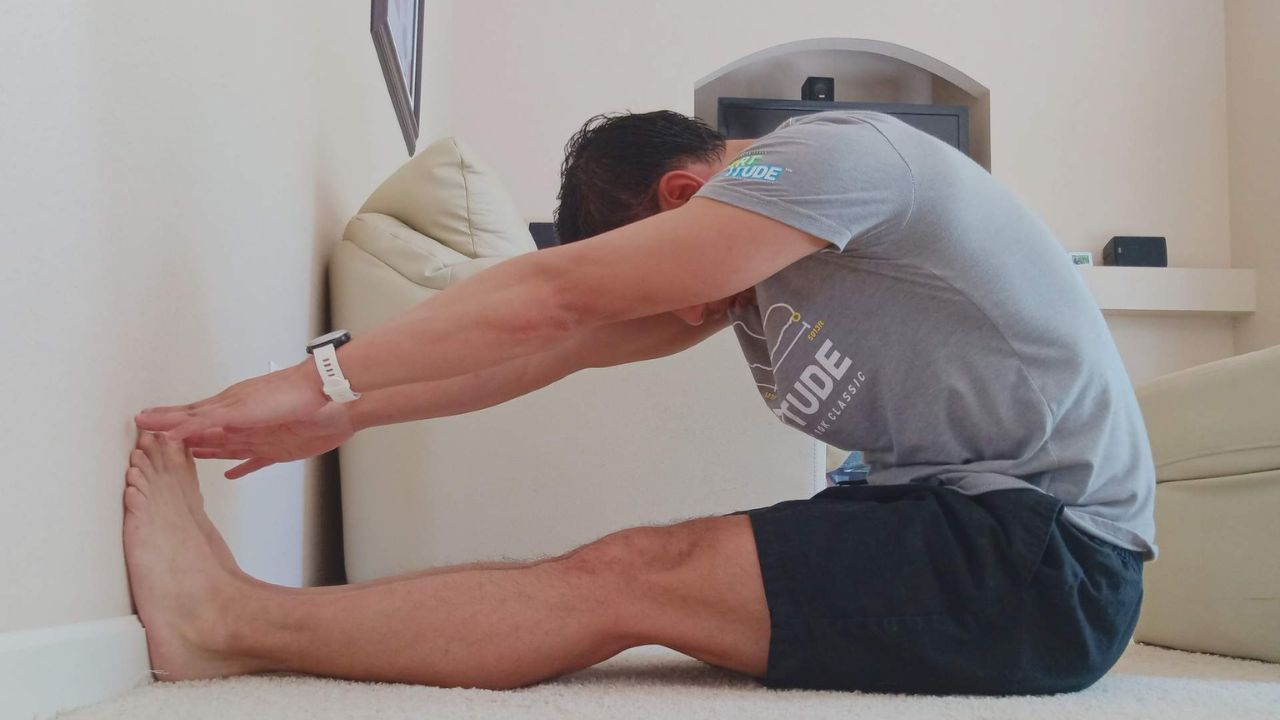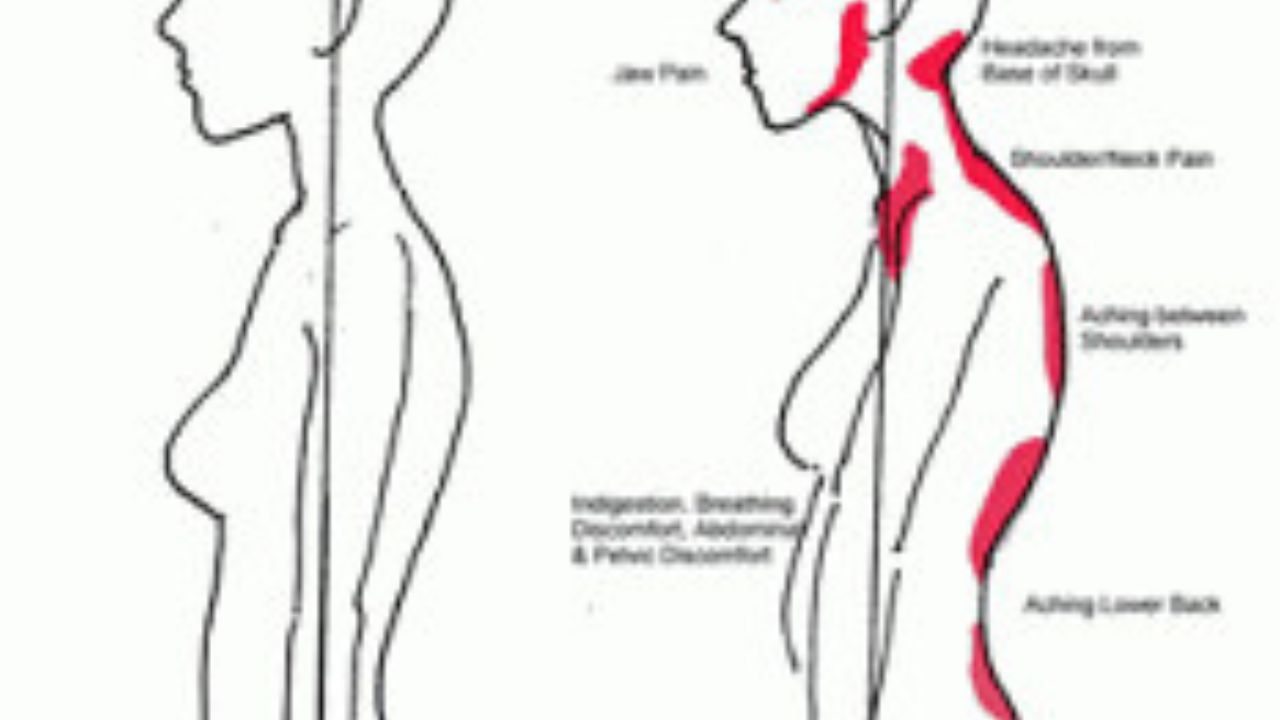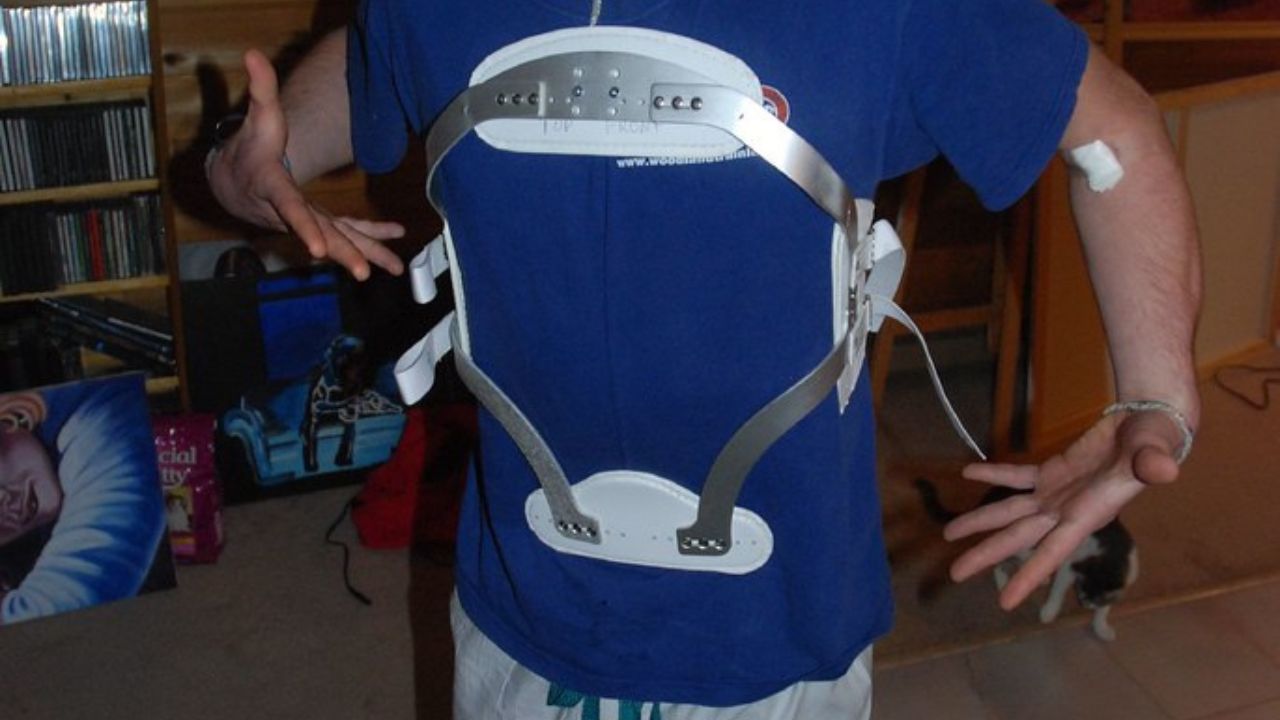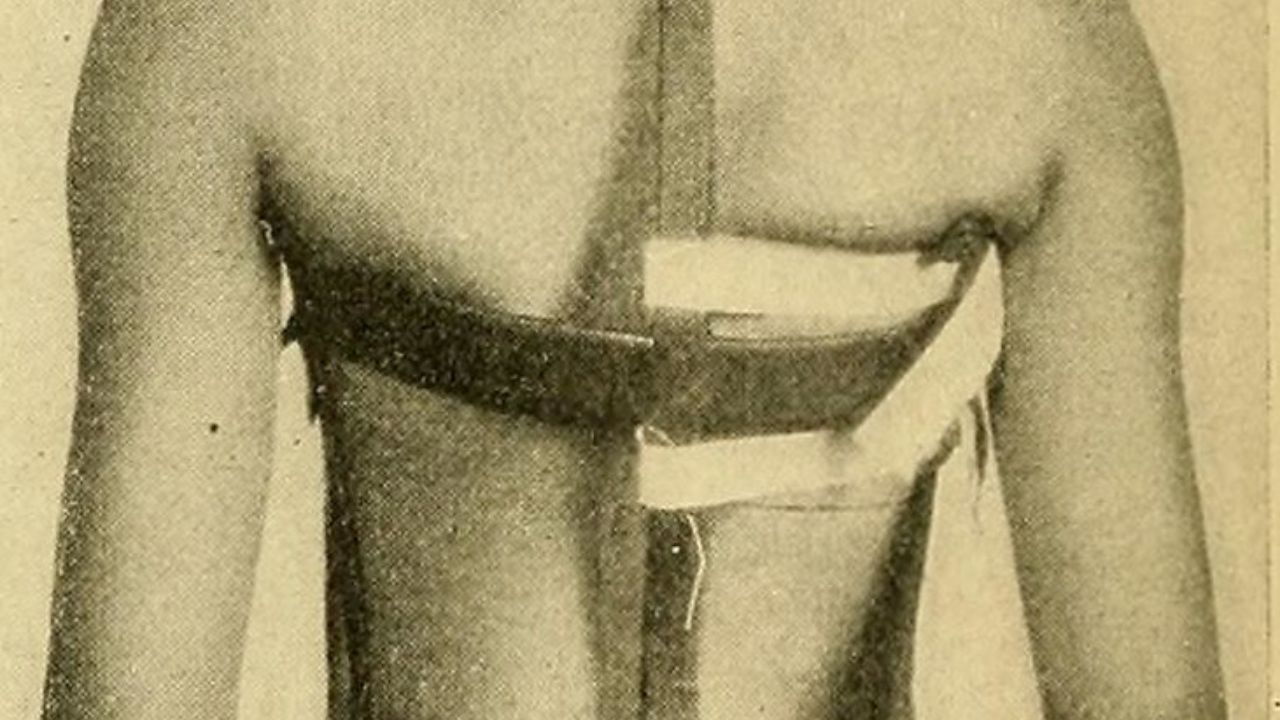
In today's sedentary world, maintaining good posture is crucial for overall health and well-being.
This article explores the top 10 proven techniques for posture rectification that have yielded tangible results.
From stretching exercises and core strengthening to utilizing ergonomic furniture and practicing proper sitting techniques, these methods have shown to improve alignment and alleviate discomfort.
With the guidance of professionals and a commitment to regular exercise, individuals can achieve better posture and enjoy the freedom of a pain-free lifestyle.
Stretching Exercises to Improve Posture
In order to improve posture, incorporating stretching exercises into your daily routine is essential. Stretching routines not only help to increase flexibility and range of motion, but they also target the muscles that are responsible for maintaining good posture. By incorporating regular stretching exercises, you can strengthen the muscles in your core, back, and neck, which are crucial for maintaining proper alignment and reducing the strain on your spine.
Additionally, stretching can help alleviate tension and tightness in the muscles, which can contribute to poor posture. To enhance the effectiveness of your stretching routine, you may consider using posture improvement devices such as resistance bands or foam rollers. These devices can provide added support and resistance, helping to further strengthen and stretch the muscles involved in maintaining good posture.
Strengthening the Core for Better Alignment
Strengthening the core muscles is crucial for improving posture and achieving better alignment.

Core stability exercises focus on strengthening the muscles in the abdomen, lower back, and pelvis, which play a key role in supporting the spine and maintaining proper posture.
Core Stability Exercises
To achieve better alignment, it is important to incorporate core stability exercises into your daily routine. Core stability training helps strengthen the muscles in your abdomen, back, and pelvis, which are essential for maintaining proper posture and body alignment. These exercises offer a variety of benefits, including:
- Improved balance and coordination
- Increased strength and stability in the core muscles
- Reduced risk of injuries, particularly in the lower back
By incorporating core stability exercises into your routine, you can improve your overall posture and alignment, leading to a more confident and pain-free life.
Some effective exercises include planks, bird dogs, and bridges. Remember to start slowly and gradually increase the intensity to avoid straining your muscles.
Proper Spinal Alignment
Achieving proper spinal alignment is crucial for maintaining a strong core and ensuring better overall body alignment. Proper spinal alignment not only improves posture but also reduces the risk of spinal injuries and chronic pain.
To achieve proper spinal alignment, incorporating specific spinal alignment exercises can be highly beneficial. These exercises focus on strengthening the core muscles, which play a key role in supporting the spine and maintaining its natural curvature.
Additionally, chiropractic adjustments can also help in realigning the spine and improving overall spinal health. Chiropractors use gentle manipulations and adjustments to correct any misalignments or imbalances in the spine, promoting proper spinal alignment and relieving pain.

Improved Body Posture
For optimal body posture and alignment, a strong core is essential. A strong core not only provides stability and support for the spine but also helps improve balance and body alignment.
Here are three tried and true techniques to strengthen your core and achieve better posture:
Plank exercises: Planks engage the entire core, including the abdominal muscles, back muscles, and obliques. Holding a plank position for a set amount of time can help build core strength and improve overall body alignment.
Pilates: Pilates focuses on core strength and stability through controlled movements. Incorporating Pilates exercises into your routine can help improve balance, strengthen the core, and promote better posture.
Yoga: Practicing yoga can help improve body awareness, flexibility, and balance. Many yoga poses, such as the tree pose or the warrior pose, require core engagement, helping to strengthen the core muscles and improve overall body alignment.
Using Ergonomic Furniture and Equipment
The incorporation of ergonomic furniture and equipment plays a pivotal role in promoting proper posture and mitigating musculoskeletal issues.
One of the key components of an ergonomic workstation is an ergonomic keyboard. These keyboards are designed to provide a more natural and comfortable typing experience, reducing the strain on the wrists and fingers. The benefits of using an ergonomic keyboard include decreased risk of developing repetitive strain injuries, improved typing speed and accuracy, and reduced muscle fatigue.

In addition to ergonomic keyboards, office ergonomics also emphasize the importance of using adjustable desks and chairs, monitor stands, and footrests to create a comfortable and supportive work environment.
Practicing Proper Sitting and Standing Techniques
Practicing proper sitting and standing techniques is crucial for maintaining good posture. One key aspect is using an ergonomic chair, which provides numerous benefits such as proper support for the spine and promoting healthy posture.
Additionally, correcting slouched posture and strengthening the core are essential for achieving and maintaining good posture in both sitting and standing positions.
Ergonomic Chair Benefits
How can ergonomic chairs benefit individuals in maintaining proper sitting and standing techniques?
Ergonomic chairs are specifically designed to promote good posture and provide support to the body while sitting or standing. These chairs offer a range of features that contribute to maintaining a healthy and comfortable position.
Here are three key benefits of using ergonomic chairs:
- Improved posture: Ergonomic chair design encourages proper alignment of the spine, reducing the risk of back pain and strain.
- Enhanced comfort: The adjustable features of ergonomic chairs, such as height, armrests, and lumbar support, allow individuals to customize their seating position for optimal comfort.
- Increased productivity: By reducing discomfort and fatigue, ergonomic chairs help individuals stay focused and productive for longer periods of time.
Investing in an ergonomic chair is essential for anyone seeking freedom from discomfort and the ability to maintain proper sitting and standing techniques.

Correcting Slouched Posture
To effectively correct slouched posture, individuals must consistently practice proper sitting and standing techniques throughout the day.
Improving posture at work is crucial, as many people spend long hours sitting at a desk. Start by adjusting the height of your chair so that your feet are flat on the floor and your knees are at a 90-degree angle. Sit with your back straight, shoulders relaxed, and your computer monitor at eye level. Take regular breaks to stretch and walk around to prevent stiffness and promote better posture.
Additionally, maintaining good posture while sleeping is important. Use a supportive mattress and pillow that aligns your spine properly. Avoid sleeping on your stomach, as this can strain your neck and back. Instead, sleep on your side or back with pillows for support.
Consistently practicing these techniques will help correct slouched posture and improve overall posture.
Importance of Core Strength
With a strong core and by implementing proper sitting and standing techniques, individuals can greatly improve their posture and overall musculoskeletal health. Core stability is of utmost importance when it comes to maintaining good posture. A strong core supports the spine, allowing for proper alignment and reducing the risk of slouching or hunching.
Pilates, a popular exercise method, is known for its focus on core strength and stability. Incorporating Pilates exercises into your routine can help strengthen the muscles in your abdomen, back, and pelvis, leading to improved posture and reduced back pain. Some benefits of Pilates for posture improvement include increased body awareness, improved spinal alignment, and enhanced overall strength and flexibility.
Utilizing Postural Braces and Supports
One effective technique for improving posture is incorporating the use of postural braces and supports. Postural braces and supports are designed to provide additional support to the spine and help maintain proper alignment. They can be worn throughout the day or during specific activities, such as sitting at a desk or exercising.

These braces and supports work by gently pulling the shoulders back, aligning the spine, and relieving pressure on the neck and lower back. They can also help to strengthen the core muscles and improve overall posture.
In addition to using postural braces and supports, it is important to ensure that the surrounding environment is conducive to good posture. This can be achieved by using ergonomic furniture and equipment, such as adjustable desks and chairs, that promote proper alignment and reduce strain on the body.
Incorporating Yoga and Pilates Into Your Routine
5 Effective Ways to Incorporate Yoga and Pilates Into Your Posture Rectification Routine
Enhanced Flexibility: Yoga and Pilates are both highly effective in improving flexibility, allowing for better range of motion and posture correction.
Increased Strength: These practices focus on core strength, which plays a crucial role in maintaining proper posture and spinal alignment.
Mind-Body Connection: Yoga and Pilates emphasize mindfulness and body awareness, helping you become more conscious of your posture throughout the day.
Incorporating yoga and Pilates into your posture rectification routine can bring numerous benefits. Both practices promote flexibility, core strength, and a strong mind-body connection.

Yoga, with its emphasis on slow, controlled movements and deep stretching, helps lengthen and strengthen the muscles, leading to improved posture.
Pilates, on the other hand, focuses on core stability, which is essential for maintaining a healthy spine and proper alignment.
Correcting Imbalances Through Physical Therapy
Addressing postural imbalances can be effectively achieved through the implementation of physical therapy techniques. Physical therapy benefits individuals by providing a targeted approach to correcting imbalances and improving posture.
Posture correction programs designed by physical therapists focus on identifying and addressing the root causes of postural imbalances. These programs may include exercises to strengthen weak muscles, stretches to increase flexibility, and manual therapy techniques to realign the spine and joints.
Physical therapy also emphasizes proper body mechanics and ergonomics to prevent further imbalances and promote overall postural health. By incorporating physical therapy into their routine, individuals can experience long-term benefits, such as reduced pain, improved stability, and better overall posture.
Engaging in Regular Cardiovascular Exercise
Incorporating regular cardiovascular exercise into your routine is crucial for improving posture and overall physical health. Engaging in activities that get your heart rate up not only strengthens your cardiovascular system but also helps with weight management, which plays a significant role in maintaining good posture.
Here are three reasons why regular cardiovascular exercise is essential for your posture rectification journey:

Increased blood flow: Cardiovascular exercise improves circulation, delivering vital nutrients and oxygen to your muscles, including those responsible for maintaining proper posture.
Strengthened core muscles: Many cardiovascular exercises, such as running, swimming, or cycling, engage your core muscles, which are essential for maintaining a stable and upright posture.
Reduced risk of weight-related issues: Regular cardio workouts help you manage your weight, reducing the strain on your spine and joints, promoting better posture.
Mindfulness and Breathing Techniques for Postural Awareness
During daily activities, individuals can cultivate postural awareness through mindfulness and breathing techniques.
Mindfulness meditation for stress reduction and breathing techniques for relaxation and focus are effective tools for improving posture.
Mindfulness meditation involves bringing attention to the present moment, including body sensations and posture. By practicing mindfulness, individuals can become more aware of their posture and make adjustments as needed.
Additionally, breathing techniques can help relax the body and mind, allowing for better postural alignment. Deep breathing exercises, such as diaphragmatic breathing, can release tension in the muscles and promote a more upright posture.

Seeking Professional Guidance for Personalized Posture Correction Plan
One effective strategy for improving posture is to seek professional guidance, as it allows individuals to receive a personalized posture correction plan tailored to their specific needs.
Personalized online consultations with posture experts can provide valuable insights and recommendations based on an individual's unique situation. These consultations can be conducted remotely, making them convenient and accessible for anyone seeking professional help.
Additionally, posture correction apps can serve as a useful tool in conjunction with professional guidance. These apps often provide exercises, reminders, and tracking features to help individuals stay on track with their posture correction goals.
Frequently Asked Questions
What Are Some Common Mistakes People Make When Performing Stretching Exercises for Posture Improvement?
When performing stretching exercises for posture improvement, common mistakes include improper form, insufficient warm-up, and overstretching. It is recommended to focus on specific stretches for target areas and gradually increase intensity to avoid injury.
How Long Does It Typically Take to See Results From Using Postural Braces and Supports?
The effectiveness of chiropractic adjustments for posture correction varies depending on individual factors such as severity of the issue and consistency of treatment. Results from using postural braces and supports can be seen within a few weeks to a few months.
Are There Any Specific Yoga or Pilates Poses That Are Particularly Effective for Correcting Posture?
Certain yoga poses and pilates techniques can be effective for correcting posture. These specific exercises target key muscles and promote proper alignment. Incorporating them into a regular practice can contribute to posture rectification and overall body alignment.
Can Mindfulness and Breathing Techniques Alone Help Improve Posture, or Do They Need to Be Combined With Other Exercises?
Mindfulness techniques and breathing exercises can improve posture by increasing body awareness and promoting relaxation. While they can be effective on their own, combining them with other exercises may yield better results in posture correction.

What Qualifications or Credentials Should I Look for When Seeking Professional Guidance for Personalized Posture Correction?
When seeking professional guidance for personalized posture correction, it is important to look for qualifications and credentials that demonstrate expertise in the field. Proper posture is crucial for daily life and seeking professional guidance can provide numerous benefits in terms of improved health and well-being.
 Mobility trainingHome Fitness RecoverySports Injury PreventionPersonal Physical TherapyOrthopedic SolutionsPrivacy PolicyTerms And Conditions
Mobility trainingHome Fitness RecoverySports Injury PreventionPersonal Physical TherapyOrthopedic SolutionsPrivacy PolicyTerms And Conditions
